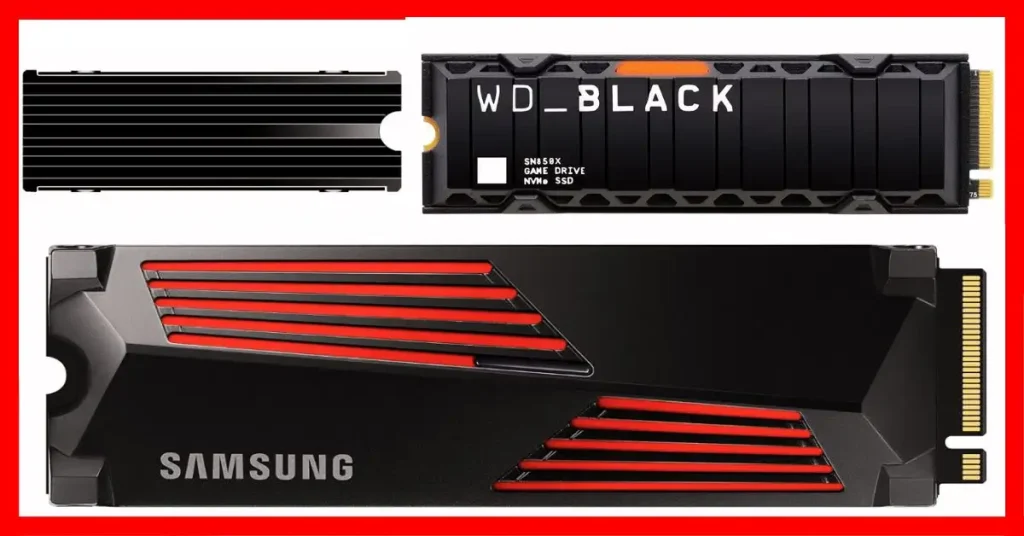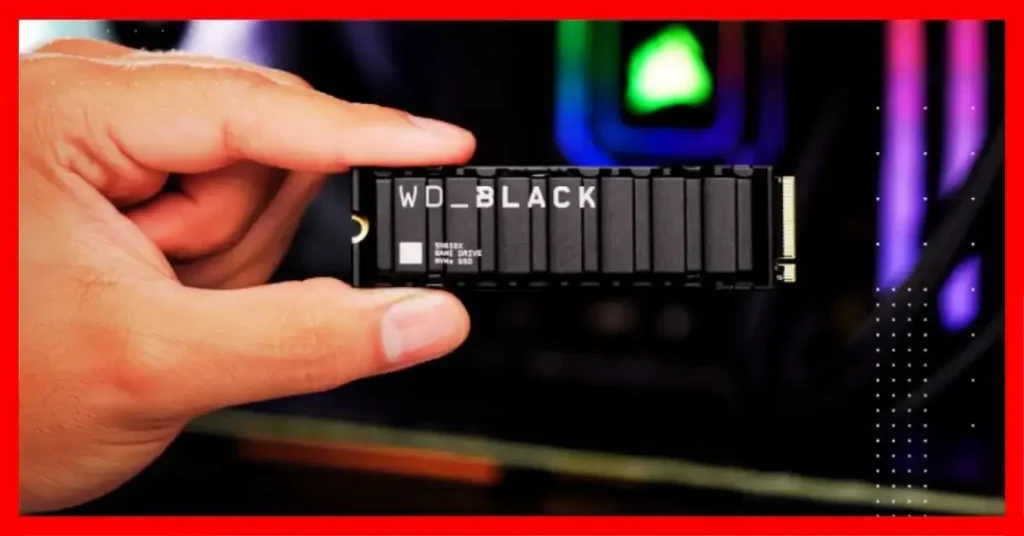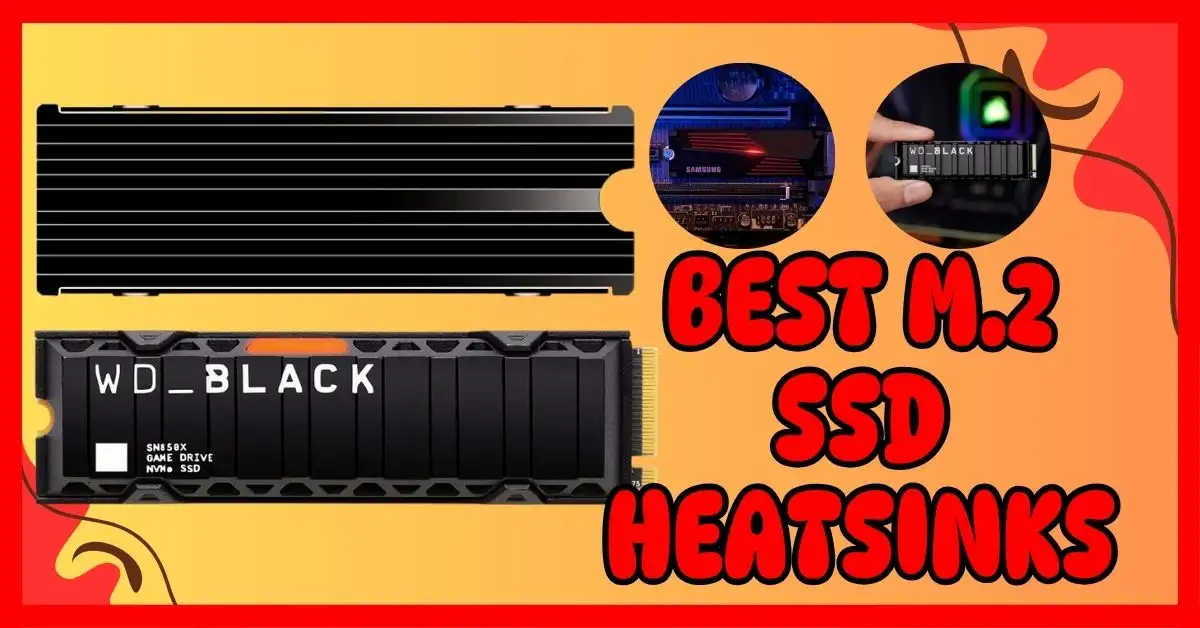When I first installed an NVMe SSD, I was amazed by the speed. But minutes later, it got so hot that performance started to drop. I had no idea a slim drive could slow down just from heat. That’s when I learned about M.2 SSD heatsinks and how much they matter.
Over time, I tested different M.2 coolers in my PC, laptop, and PS5. Some worked great, cutting temps by more than 15°C. Others were harder to fit or didn’t make much difference.
In this guide, I’ll share what I’ve learned about the best M.2 SSD heatsinks for USA users. You’ll see when a heatsink NVMe cooler is truly necessary, which options work best for laptops and PS5, and my real-world picks you can trust.

Do You Really Need an M.2 SSD Heatsink?
Yes, in most cases you do. An M.2 heatsink keeps your NVMe SSD from getting too hot, which helps prevent speed drops and performance loss. Without one, drives often slow down when the heat builds up, especially during big file transfers or gaming sessions.
Think of thermal throttling like your car engine pulling back when it overheats. The drive still works, but it runs slower to protect itself. I learned this the hard way when my Samsung 970 EVO started dropping speed halfway through moving files. Once I added a small heatsink, temps dropped by more than 15°C, and the SSD stayed fast the whole time.
You’ll want a heatsink if you use a high-performance NVMe drive, add storage to a PS5, or run a compact desktop where airflow is tight. In these cases, cooling is not just helpful—it’s necessary to keep your drive stable.
For lighter use, like casual browsing or a budget SSD in a laptop, you may not need one. Many laptops also leave little room for bulky coolers, so a slim drive alone works fine. Still, if you notice your system slowing down under load, adding a thin heatsink can be a simple fix.
What Makes the Best M.2 SSD Heatsink?
A good M.2 SSD heatsink can make a huge difference. It keeps your NVMe drive cool, which means no sudden slowdowns or throttling. Think of it like a car radiator: the better the material and airflow, the cooler your drive runs.
Material matters. Most heatsinks use aluminum or copper. Aluminum is light and easy to install. Copper pulls heat faster but can be a bit heavier. Either way, quality metal improves cooling.
Size and fit are key. Laptops need slim, single-sided heatsinks. Desktops and PS5s can handle taller or double-sided ones. Always check the height of your M.2 slot before buying.
Thermal pads make a difference. They help the heat move from the SSD to the heatsink. Good pads are soft, stick well, and don’t damage the drive. Cheap pads can reduce performance.
Installation should be simple. Clips or screws need to hold the heatsink firmly without bending the SSD. Easy installation saves time and prevents damage.
When choosing a heatsink, consider all these factors. The best one balances material, size, thermal pads, and installation ease. That’s how you get a cooler, faster, and safer SSD.
Best M.2 SSD Heatsinks (My Tested Picks)
When it comes to keeping your SSD cool, not all heatsinks are created equal. I’ve tested several in my PC, laptop, and PS5, and these three stood out for performance, fit, and ease of use. Here’s what I found.
1. SGTKJSJS M.2 Heatsink Cooler (Best Budget Pick)
If you want an affordable way to cool your M.2 SSD, this is a solid choice. It works for both PS5 and desktop PCs. I noticed a temperature drop of 10–20°C after installing it. The clip-on design makes it easy to attach without tools.
Why I recommend it: Perfect for budget users or those upgrading their PS5 storage without breaking the bank.
2. WD_BLACK SN850X with Heatsink (Best Gaming Choice)
For gamers, this one is hard to beat. It’s a super-fast NVMe SSD with a built-in heatsink. Speeds hit up to 7,300 MB/s, which made loading games on my PS5 feel instant. It also has RGB and Game Mode 2.0 for extra flair.
Why I recommend it: Ideal if you need both speed and cooling for intense gaming sessions.
3. Samsung 990 PRO with Heatsink (Best Premium Pick)
This is for power users who want top-tier performance. I tested its read/write speeds — 7,450/6,900 MB/s — and it handled large files without slowing down. The slim heatsink fits perfectly in the PS5 and keeps the drive cool under heavy workloads.
Why I recommend it: Best for workstations, video editing, or anyone who demands high performance and reliability.
👉🏿👉🏻 Check Latest Price and Offer at Amazon 👈🏻👈🏿
👉🏿👉🏻 Check Latest Price and Offer at Amazon 👈🏻👈🏿
👉🏿👉🏻 Check Latest Price and Offer at Amazon 👈🏻👈🏿

Best M.2 SSD Heatsink for Laptops
Laptops are tricky because space is tight. You can’t just slap a big heatsink on and expect it to fit. I learned this the hard way. My first heatsink wouldn’t let the back panel close. I had to swap it for a slim, low-profile option.
For laptops, I recommend ultra-slim, single-sided heatsinks. They still help drop temperatures but won’t block your case. On my laptop, a thin aluminum heatsink cut temps by about 10°C. It was easy to install and didn’t add bulk.
Even small drops in temperature matter. Cooler SSDs last longer and keep speeds consistent. Think of it like a tiny radiator for your laptop’s storage. A good slim heatsink can save you from unexpected slowdowns during heavy tasks.
Pro tip: Always check your laptop’s clearance before buying. Not all slim heatsinks fit every model.

Best M.2 SSD Heatsink for PS5
The PS5 can run hot, especially with high-speed NVMe drives. Sony actually recommends using a heatsink for any SSD upgrade. Without it, your drive can throttle speeds when it gets too warm.
Space in the PS5 slot is tight. Not all heatsinks fit. I learned this while testing different models. A bulky cooler just would not close under the PS5 cover.
For the PS5, I found two reliable options. The Samsung 990 PRO with Heatsink is slim and officially PS5-ready. It slides right in and keeps temps low. Another solid choice is the SGTKJSJS Cooler. It is budget-friendly and fits perfectly too.
Installing a heatsink is easier than you might think. I just popped the SSD in, clipped on the cooler, and slid it into the PS5. Temps dropped instantly, and the drive stayed fast during long gaming sessions.
Tip: Always double-check the height of your SSD + heatsink combo before closing your PS5. A small difference can block the cover.

FAQs About M.2 SSD Heatsinks
Q1: Is an M.2 SSD heatsink necessary?
Yes, if you have a fast Gen4 NVMe drive or a PS5, a heatsink helps stop your drive from slowing down. For light users or older drives, it’s not a must. I learned this when my Samsung 970 EVO started throttling mid-transfer—adding a heatsink fixed it instantly.
Q2: Do heatsinks improve SSD lifespan?
Absolutely. Cooler temps reduce wear and help your SSD last longer. Think of it like keeping your car engine from overheating—lower heat means less stress over time.
Q3: Can I use an M.2 heatsink in a laptop?
Only if the heatsink is slim enough. Laptops have tight spaces, and I’ve had to swap bulky coolers for low-profile ones just to close the back panel. Always check the clearance first.
Q4: What’s the best M.2 SSD heatsink for PS5?
The Samsung 990 PRO with Heatsink is slim and officially PS5-ready. The SGTKJSJS Cooler is a good budget option. Both fit well and keep your drive cool during long gaming sessions.
Q5: Should I buy an SSD with a heatsink or add one myself?
If budget allows, go for an SSD with a built-in heatsink like Samsung or WD. If you’re upgrading an existing drive, a third-party cooler works just fine and drops temps noticeably.
Final Verdict – My Take on the Best M.2 SSD Heatsinks
After testing different setups in both my PC and PS5, I can say that a good M.2 heatsink really makes a difference. It keeps your drive cool and avoids speed drops. It’s one of the easiest upgrades you can do to protect your storage and performance.
If you want a budget-friendly option, go with the SGTKJSJS cooler. It’s simple, effective, and works well in PS5 or desktop setups.
For gamers who want speed and style, the WD_BLACK SN850X with heatsink is perfect. It’s fast, has a built-in cooler, and even some RGB flair if you like that.
If you need top-tier performance, the Samsung 990 PRO with heatsink is the way to go. It’s slim, PS5-friendly, and handles heavy workloads without breaking a sweat.
In short, a good M.2 heatsink keeps your drive safe, your PC or console running smooth, and your files secure. I’ve seen firsthand how a simple heatsink can stop a drive from throttling and make transfers much faster.
To Get More About Home and Kitchen Product You Can Visit Our Site. If You Found our Posts Helpful Leave a Comment Below

